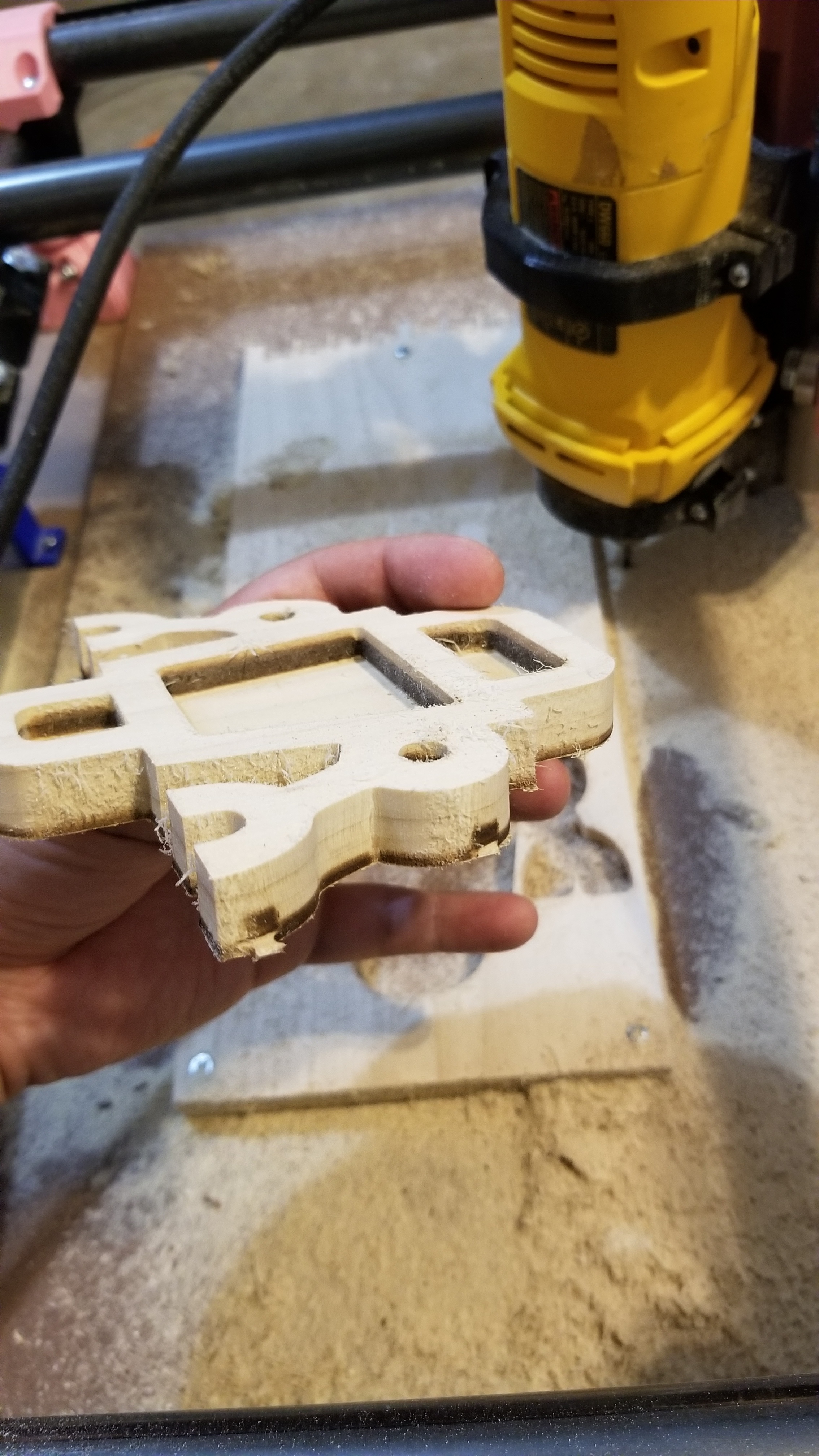In the past I had suspected somewhat large runout and developed overly-elaborate theories on how an offset might cause a single-flute cutter to behave as if it has nonuniform cutting radius along its length due to the helical cutting edge.
A recent V-carve highlighted the question of runout for me again, and I eyeballed the error at very roughly 0.6 mm meaning plus or minus 0.3 mm from center:
I removed the tool and collet and tried to brush off as much junk as possible, and once reinstalled it appeared to be better (maybe half the error) but still not great.
With a large enough error in just the wrong orientation it seems possible that a single flute cutter might be offset such that the cutting edge sweeps a smaller radius than the relief behind the cutting edge, which would cause rubbing and could explain the burn marks here which I was unable to explain at the time.

For dimensionally accurate cuts like for two mating pieces, I had figured I would need to install the tool, make some test cuts to determine the effective radius of the tool, and then adjust in CAM accordingly. For a V-bit this becomes more complicated since the tool is effectively like a truncated V-bit. And if a job requires a tool change between a regular 1/8" bit and a V-bit, it’s rather inconvenient to perform test cuts and adjust CAM for the second half of the job!
I realize to some degree this is “chasing zeroes” and I’m off in the wilderness. Apart from cleaning the collet really well I’m having a hard time thinking of a better remedy than test cuts and CAM adjustment. Maybe with a “microscope” I could determine the effective cutting diameter optically (and along the entire length) instead of wasting material.
Does anyone have any better ideas? Should I buy more collets and hope that some run more true or is this even an option for DW660? Is this unlikely to be the problem anyway?
